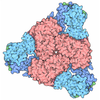Entry Database : PDB / ID : 4jygTitle Crystal structure of RARbeta LBD in complex with agonist BMS411 [4-{[(5,5-dimethyl-8-phenyl-5,6-dihydronaphthalen-2-yl)carbonyl]amino}benzoic acid] Retinoic acid receptor beta Steroid Receptor Coactivator 1 Keywords / / / Function / homology Function Domain/homology Component
/ / / / / / / / / / / / / / / / / / / / / / / / / / / / / / / / / / / / / / / / / / / / / / / / / / / / / / / / / / / / / / / / / / / / / / / / / / / / / / / / / / / / / / / / / / / / / / / / / / / / / / / / / / / / / / / / / / / / / / / / / / / / / / / / / / / / / / / / / / / / / / / / / / / / / / / / / / / / / / / / Biological species Homo sapiens (human)Method / / / Resolution : 2.35 Å Authors Nadendla, E.K. / Teyssier, C. / Germain, P. / Delfosse, V. / Bourguet, W. Journal : Plos One / Year : 2015Title : An Unexpected Mode Of Binding Defines BMS948 as A Full Retinoic Acid Receptor beta (RAR beta , NR1B2) Selective Agonist.Authors : Nadendla, E. / Teyssier, C. / Delfosse, V. / Vivat, V. / Krishnasamy, G. / Gronemeyer, H. / Bourguet, W. / Germain, P. History Deposition Mar 29, 2013 Deposition site / Processing site Revision 1.0 Mar 19, 2014 Provider / Type Revision 1.1 Apr 13, 2016 Group Revision 1.2 Feb 28, 2024 Group / Database references / Derived calculationsCategory chem_comp_atom / chem_comp_bond ... chem_comp_atom / chem_comp_bond / database_2 / struct_ref_seq_dif / struct_site Item _database_2.pdbx_DOI / _database_2.pdbx_database_accession ... _database_2.pdbx_DOI / _database_2.pdbx_database_accession / _struct_ref_seq_dif.details / _struct_site.pdbx_auth_asym_id / _struct_site.pdbx_auth_comp_id / _struct_site.pdbx_auth_seq_id
Show all Show less
 Yorodumi
Yorodumi Open data
Open data Basic information
Basic information Components
Components Keywords
Keywords Function and homology information
Function and homology information Homo sapiens (human)
Homo sapiens (human) X-RAY DIFFRACTION /
X-RAY DIFFRACTION /  SYNCHROTRON /
SYNCHROTRON /  MOLECULAR REPLACEMENT / Resolution: 2.35 Å
MOLECULAR REPLACEMENT / Resolution: 2.35 Å  Authors
Authors Citation
Citation Journal: Plos One / Year: 2015
Journal: Plos One / Year: 2015 Structure visualization
Structure visualization Molmil
Molmil Jmol/JSmol
Jmol/JSmol Downloads & links
Downloads & links Download
Download 4jyg.cif.gz
4jyg.cif.gz PDBx/mmCIF format
PDBx/mmCIF format pdb4jyg.ent.gz
pdb4jyg.ent.gz PDB format
PDB format 4jyg.json.gz
4jyg.json.gz PDBx/mmJSON format
PDBx/mmJSON format Other downloads
Other downloads 4jyg_validation.pdf.gz
4jyg_validation.pdf.gz wwPDB validaton report
wwPDB validaton report 4jyg_full_validation.pdf.gz
4jyg_full_validation.pdf.gz 4jyg_validation.xml.gz
4jyg_validation.xml.gz 4jyg_validation.cif.gz
4jyg_validation.cif.gz https://data.pdbj.org/pub/pdb/validation_reports/jy/4jyg
https://data.pdbj.org/pub/pdb/validation_reports/jy/4jyg ftp://data.pdbj.org/pub/pdb/validation_reports/jy/4jyg
ftp://data.pdbj.org/pub/pdb/validation_reports/jy/4jyg Links
Links Assembly
Assembly
 Components
Components Homo sapiens (human) / Gene: RARB, HAP, NR1B2 / Plasmid: pET15b / Production host:
Homo sapiens (human) / Gene: RARB, HAP, NR1B2 / Plasmid: pET15b / Production host: 
 Homo sapiens (human) / References: UniProt: Q15788, histone acetyltransferase
Homo sapiens (human) / References: UniProt: Q15788, histone acetyltransferase
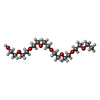
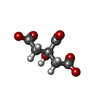




 X-RAY DIFFRACTION / Number of used crystals: 1
X-RAY DIFFRACTION / Number of used crystals: 1  Sample preparation
Sample preparation SYNCHROTRON / Site:
SYNCHROTRON / Site:  ESRF
ESRF  / Beamline: BM30A / Wavelength: 0.979759 Å
/ Beamline: BM30A / Wavelength: 0.979759 Å Processing
Processing MOLECULAR REPLACEMENT / Resolution: 2.35→39.5 Å / SU ML: 0.35 / σ(F): 2.01 / Phase error: 26.71 / Stereochemistry target values: ML
MOLECULAR REPLACEMENT / Resolution: 2.35→39.5 Å / SU ML: 0.35 / σ(F): 2.01 / Phase error: 26.71 / Stereochemistry target values: ML Movie
Movie Controller
Controller






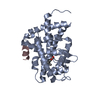


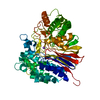


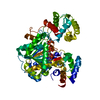

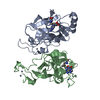


 PDBj
PDBj














